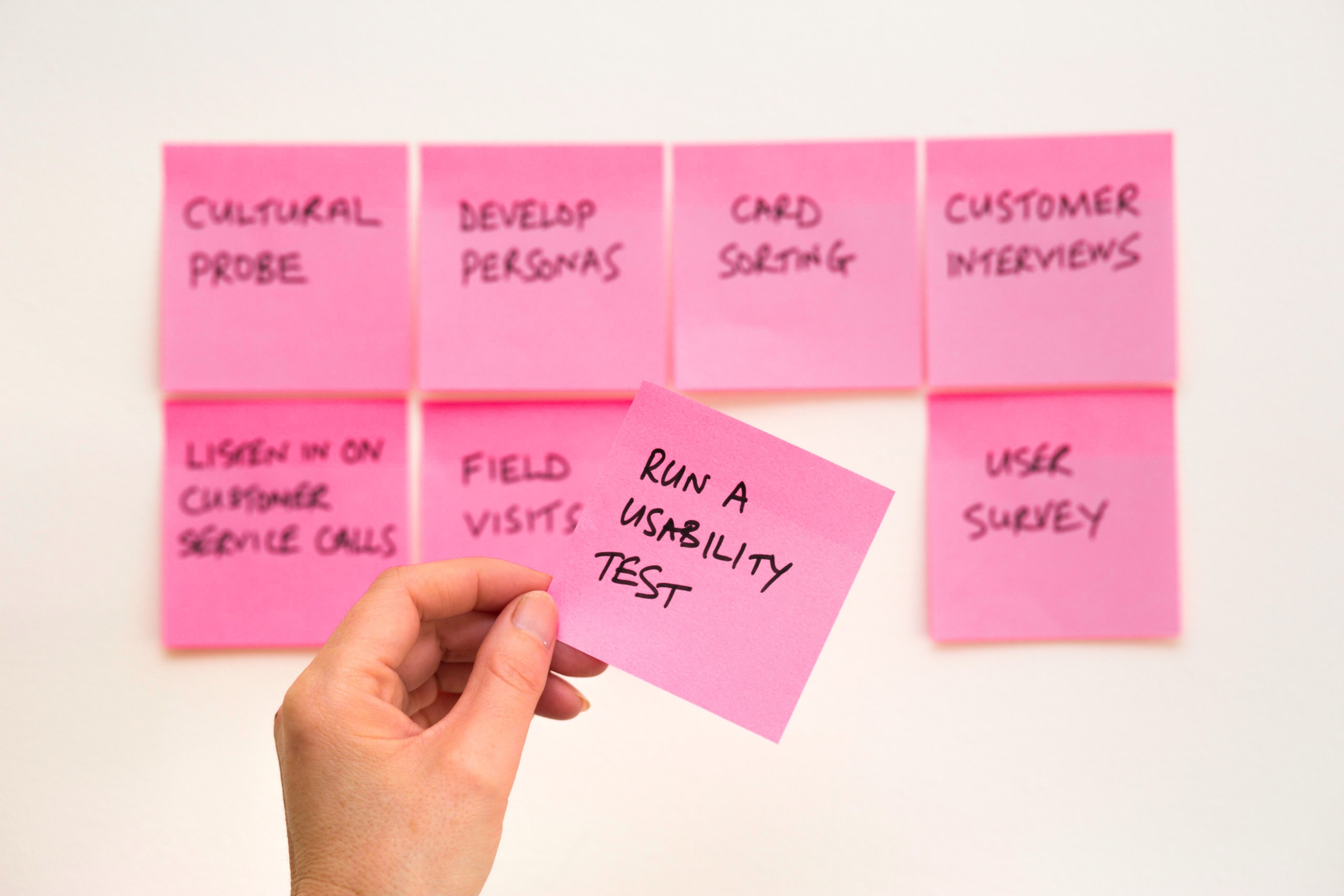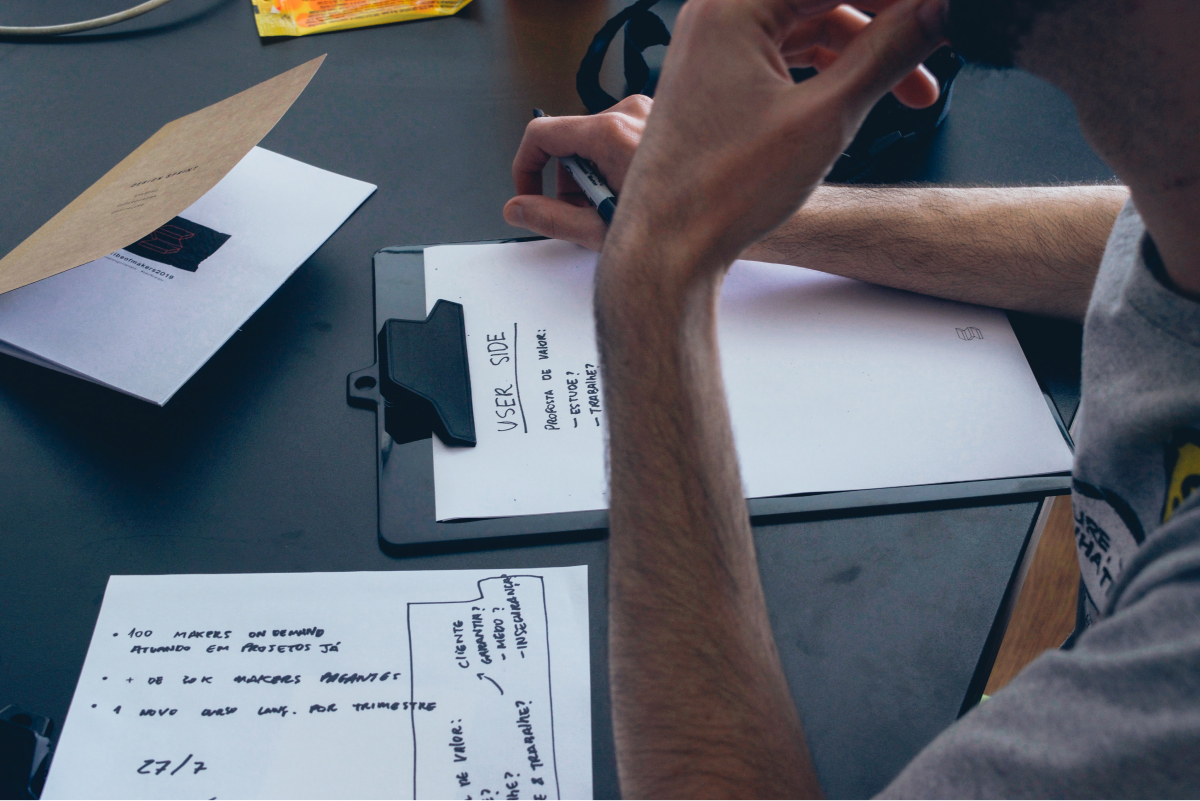Conventional wisdom suggests that if you design a brilliant, useful mobile app, people will naturally want to download and use it all the time. After all, it seems that some mobile apps just appear out of thin air sometimes — one minute you’re just hearing about them, the next they’re an international sensation.
While that might be partially true in some cases, the reality is that the mobile app marketplace is crowded and complex, and knowing who your users are and what they want throughout every stage of the design and development process is the key to your app’s ongoing success.
There are several layers involved in performing good user research for mobile apps, and the process can understandably seem time consuming and even superfluous, but the opposite is actually true.
Although it’s not an exact science, there are a few tools and techniques available to create a successful user research strategy.

Why Does User Research Matter for Mobile App Development?
Designing and developing an app without considering the people that will use it is like investing a significant amount of time and money into planning a big party or carnival, only to realize once it’s too late that you forgot to invite any guests, or ordered the wrong supplies and attractions for the people who did show up.
Once it’s out there, it’s much harder (if not impossible) to fix and make adjustments after the fact.
And it’s not like you’re the only one out there competing for folks to download and use your particular app. Android and iOS each have over two million apps, and overall global app downloads are approaching 200 billion. To put those numbers into perspective, consider the fact that when the Apple App Store first launched a little over a decade ago in 2008, there were just 500 apps to choose from.
Today, apps have transformed everything from how we work, play, communicate, shop, travel, eat, and handle our money. Billions of people have millions of apps that they can choose from, and the chances of a new and unknown mobile app getting noticed, much less making a splash in the marketplace, are unfortunately very slim.
9,999 Problems — And You’re Probably One of Them
The bleak reality is that 9,999 out of every 10,000 mobile apps will probably fail. That’s right, out of every 10,000 mobile app launches, only one is likely to succeed. If that sounds like a bleak and discouraging statistic, understanding why so many mobile apps fail can help to put those numbers into greater context.
In an overcrowded and saturated marketplace, it’s hard — if not close to impossible — for even the best new apps to compete. But getting attention and a download is only the first step. A quarter of all mobile app users will most likely abandon an app after using it just once.
There are plenty of reasons why someone will choose to download an app and only use it once, but a bad design and user experience typically tops the list. Think about your own experience as a mobile app consumer: how many times have you been excited to download a new app, only to abandon it in frustration after the first try because it wasn’t what you expected, didn’t deliver on its promises, or worst of all, didn’t work how it was supposed to?
In depth user research helps mobile app designers and developers think like the consumers that the app is meant to serve.

User Research Methods for Your Mobile Apps
The process for collecting and implementing user research data into mobile app design and development plans isn’t necessarily linear or set in stone. But the principles behind good user research are basically the same: you’re ultimately creating an app for your users, not for yourself.
Knowing what motivates them, what they’re looking for in an app, and how they interact with technology is the basis of good user research.
The user research process will vary for every mobile app, but here are some of the basic elements to help you develop user friendly apps every time.
Know Thy User
This one might sound obvious, but you’d be surprised as to how many mobile apps and software programs overlook the most fundamental principle of the design and development process: consider the user.
With countless people downloading billions of apps around the world every year, it can be easy to think in generalities and to forget that underneath all of the data and statistics, you’re designing and building products for individual human beings who are all motivated and driven by their own beliefs, needs, emotions, and the circumstances of their daily lives.
For example, China accounts for almost half of all mobile app downloads, making it the biggest market in the world. If you’re developing a mobile app for a global audience, you’ll have to account for and understand the differences between the needs of consumers in China, and how they differ from users in the United States and Europe.
So how do you find out what millions of people want, especially if you have a small team and budget with limited time and resources?

Create User Personas
User personas are composites of your ideal users that you can create using a number of data points. You can’t conduct accurate or actionable user research if you have no idea who they are, so the best way to sketch your basic user personas is to start with a series of general questions:
- Where do they live?
- How old are they?
- What languages do they speak?
- What’s their educational background?
- Do they prefer iOS or Android? Do they have a preference at all?
- What are their goals?
- Are they interested in learning something new?
- Do they have disposable income to spend?
- What mobile apps are they already using?
- Where do they work?
- What do they do for fun?
- What do they love (and hate) about the mobile apps they’re currently using?
Including your users at every stage of the design process lowers the risk of some of the most common problems that mobile apps eventually face, from low engagement to bugs and usability issues. Not only are these problems usually much more time consuming and expensive to fix after the fact, but by then it might also be too late.
If your app doesn’t deliver on the first try, chances are that your users might not stick around to give you another chance to fix it. Taking the steps to lock them in before you actually launch your app is the best way to guarantee its success later on.

Types of User Research
User research can be broken down into two categories: qualitative and quantitative. Quantitative research consists of the information you can learn about your users from the factors that you can assign a numerical value: for example, the hard data that comes from statistics and analytics information.
Qualitative data deals with the factors that you can’t necessarily assign a numerical value or “count.” This would be the psychological and emotional factors that motivate and make people behave in a certain way. Qualitative data is usually obtained from observing behavior, or asking targeted questions.
Depending on the scope of your mobile app and your resources, there are a number of tools available to help you conduct qualitative and quantitative user research.
The best user research combines some elements of both qualitative and quantitative information.
Here are some of the most successful tools of the trade for performing qualitative and quantitative user research:
Perform Studies
Researchers use different types of study methods to learn how people interact with software and mobile apps. In a journal study, users are asked to keep track of and detail their mobile app usage by taking notes and making regular entries in a journal or diary.
In a lab study, researchers watch how people interact with technology first-hand, and can design specific tasks or questions to get even more insight into certain aspects of the app.
The third type of research study is observational, which is similar to a lab study but is usually in a more informal setting and involves recording the sessions for further research.
Performing studies in a lab or market research setting may be difficult or impossible for designers and developers with a limited budget and resources, so don’t worry if this particular tool doesn’t make sense for your current project. There are many ways to get quality user information even with limited resources.

Conduct Surveys
Targeted user surveys are a great way to test a large sample of potential users without the logistical hurdles or expense of conducting organized in-person studies. In fact, the possibilities are really endless in terms of the data you can collect from a series of targeted surveys.
One of the many benefits is that surveys are relatively cheap and easy to set up, and you can deploy a new survey at different points throughout the design, development, and post-launch phases to measure everything from performance to user engagement.
Since you have the freedom to design and format your questions in a number of different ways, surveys are an ideal tool to collect both qualitative and quantitative information from potential users.
User Interviews and Testing
Comprehensive user research ultimately comes down to gathering, interpreting, and implementing information about the best way to design, build, and maintain your mobile app after its launch. How you go about it and the tools you use will depend on the resources you have at your disposal, but one thing for app designers and developers to keep in mind is that user research itself isn’t a bonus or disposable part of the process, at least not if you want your app to be successful.
In addition to providing you with basic demographic and behavioral information, user research and interviews are like a thread that weaves the design and development process together.
Here’s a more specific breakdown of the types of surveys and tools you can use to get the information you need to design and build your mobile app:
- Stakeholder interviews
Stakeholder interviews — for some projects — are easy to forget or brush over. If you’re building an app for someone (a person, or a company), it’s obvious who you should be testing. On the other hand, you might just have investors, or various members of your team you can get quality feedback from. Either way, this is the very first step you should take when looking for genuine feedback. - Accessibility testing
Far too many apps treat accessibility like a tacked-on feature instead of a core part of the design focus. That’s not just bad for accessible design — it’s bad for all of your users. An accessible app can have a much wider audience. - Focus groups
Focus groups are simple tools you can use to quickly test your app using a real-world environment. Focus groups don’t have to be in-person, either. Nor do they have to be complicated. A focus group could simply be friends of friends who meet up in your office or over Zoom. As long as you can get them to talk about how they feel about the app, they can be a focus group. - Competitor research and analysis
Look at your competitors and analyze what they are doing. What problems does their app have? What are people saying about their app? Are you making the same mistakes, or are you improving on what they’ve done? - A/B testing
Sometimes it’s hard to know if a feature is really better (or worse) until you test it on two groups of people and then collect data. Not sure how to A/B test without having your app in the wild? A prototype can certainly speed the process along. With a prototype, you can test multiple designs and see how users move around the app and navigate to where they need to go. You can also see which modifications of the UI are adopted quickly by users, and which are hated. - Bug reporting
Bug reports aren’t typically considered user research — they’re just bugs, right? But as any veteran QA team member knows, a lot of “bugs” aren’t really bugs. Sometimes, a piece of software is just designed to do things in one way, whereas a user wants to do things in a completely different way. If that behavior isn’t clearly explained, users can get frustrated, and leave your app in the dust.
When it comes to getting to know your app’s users, there’s no such thing as too much information. The more research you conduct and the more information you have about what your potential users and customers want, the easier it will be to design a successful app.
The tools and methods you use will usually adapt and change over time depending on the project, but adopting a user-centric design and development approach should be the foundation of everything you work on in the future.






